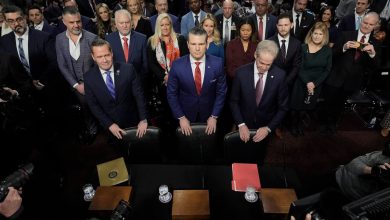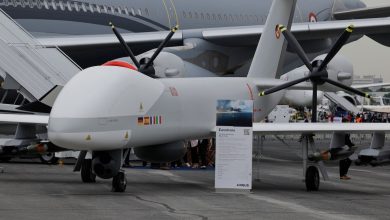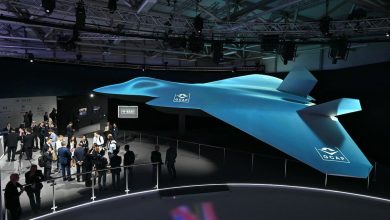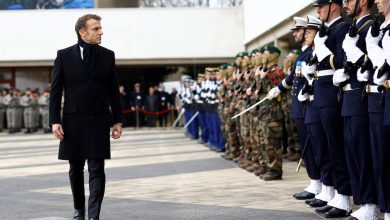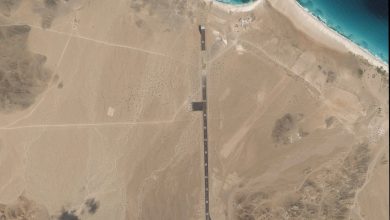Second Trump presidency could mean harder line with defense industry
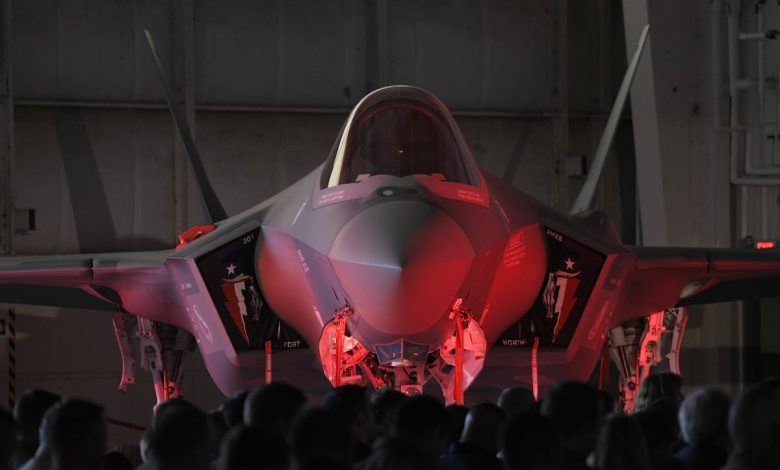
The return of President Trump as commander-in-chief could mean more hardball negotiations with defense contractors.
But Trump’s focus on cost cutting and potential insistence on hard deals may run into resistance from an industry that has grown wary of the kind of contracts that put them at greater risk — particularly aerospace firms developing expensive aircraft heavily reliant on new, high-risk technology.
And as the Air Force faces a cash crunch limiting its ability to modernize key parts of its force, it remains to be seen whether a second Trump administration will free up more resources for programs such as a next-generation fighter.
John Venable, a retired F-16 pilot and senior fellow at the Mitchell Institute for Aerospace Studies, said that Trump can leverage his unique ability to command public attention to put pressure on underperforming defense contractors. He pointed to Lockheed Martin’s delays in getting necessary upgrades into the F-35 as an example.
“If [Trump] spoke about Lockheed Martin publicly and the board of directors heard that, you would see a change in the direction and intensity on the delivery of [F-35] products,” Venable said. “If he flinches in the direction of U.S. industry, particularly in the military industrial complex, I think you’re going to see a lot of this stalling of production go away. This, ‘We can’t get parts, we can’t assemble things fast enough, we’re having software issues.’ Those excuses are not going to fly with this guy, and I think the military and industry will all benefit from that heat.”
Trump frequently touts his business acumen and ability to strike deals, particularly his administration’s 2018 renegotiation of Boeing’s contract to build two new VC-25B Air Force One presidential planes. Most recently, Trump blasted “unbelievable waste and fraud” in the government in an Oct. 31 live interview with Tucker Carlson. One of Trump’s early actions as president-elect was to put business tycoon Elon Musk and entrepreneur Vivek Ramaswamy in charge of a government efficiency commission tasked with rooting out waste.
“I saved much more than $1 billion when I came into the White House in one day, when I said, ‘I’m not going to pay that much to Boeing for Air Force One,’” Trump said Oct. 31. “It took about a couple of weeks, you know, saying I’m not buying it. No, I don’t want it. But there’s a plane that you’re saving much more than $1 billion, and you’ve got thousands of things like that. Not as much, and in some cases, much more.”
Hard figures verifying the Air Force One savings are hard to come by. But Boeing came to regret that deal, and has lost nearly $2.7 billion on the VC-25B program in all. Boeing’s former chief executive Dave Calhoun suggested that the company should not have accepted the Trump administration’s demands on the Air Force One renegotiation.
“Air Force One, I’m just going to call a very unique moment, a very unique negotiation, a very unique set of risks that Boeing probably shouldn’t have taken,” Calhoun told investors in an April 2022 earnings call, after the company reported a $660 million quarterly loss on the program.
Fixed-price contracts are one method the government can use to hold down costs, and Air Force One is one of several major programs for which Boeing agreed to those terms. Under such deals, a contractor agrees to deliver a product or service for a certain price. If the program runs over budget or has any changes that the government didn’t originally agree to, the contractor foots the entire bill. This gives a contractor a strong incentive to hold prices down.
But if the Trump administration tries to use fixed-price contracts to bring down prices, major defense contractors could push back. Boeing, smarting from widespread losses on its fixed-price programs, has sworn off agreeing to those contracts in the future. Other companies, such as L3Harris Technologies and Lockheed Martin, have watched Boeing’s experience and shied away from fixed-price deals, even though it meant staying on the sidelines during competition for major programs.
The potential for another bonanza in military spending under a new Trump administration could alleviate some of the Air Force’s modernization woes — but nothing is guaranteed.
The Air Force is bringing on the new B-21 Raider stealth bomber, T-7 Red Hawk trainer, and F-15EX Eagle II, as well as continuing to buy more F-35A Joint Strike Fighters. The service is getting closer to having the first iteration of drone wingmen known as collaborative combat aircraft. And it’s trying to find ways to bring the future costs of its LGM-35A Sentinel intercontinental ballistic missile under control.
But the Air Force’s original concept for a sixth-generation fighter family of systems known as Next Generation Air Dominance proved to be prohibitively expensive, and its future is now in question. Price estimates on NGAD came in at roughly three times as much as an F-35, which would have significantly limited the size of NGAD’s potential fleet. The Air Force is now in the midst of a review of its air dominance needs, and considering ways to redesign NGAD to bring its price down.
Air Force Secretary Frank Kendall said Nov. 1 that the service likely couldn’t afford a next-generation stealth tanker along with its other modernization needs.
Venable said a potential budget hike under the next Trump administration could prove to be a lifeline for NGAD or other programs that could be fielded within the next seven years. A tanker counterpart, known tentatively as NGAS, would likely have to wait until more funding is found, he added.
Stephen Losey is the air warfare reporter for Defense News. He previously covered leadership and personnel issues at Air Force Times, and the Pentagon, special operations and air warfare at Military.com. He has traveled to the Middle East to cover U.S. Air Force operations.
Read the full article here

